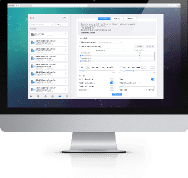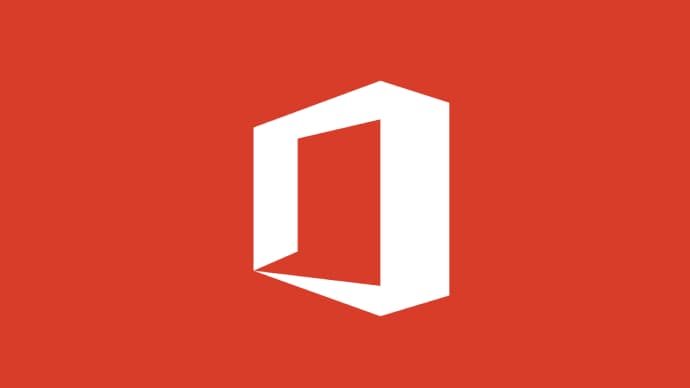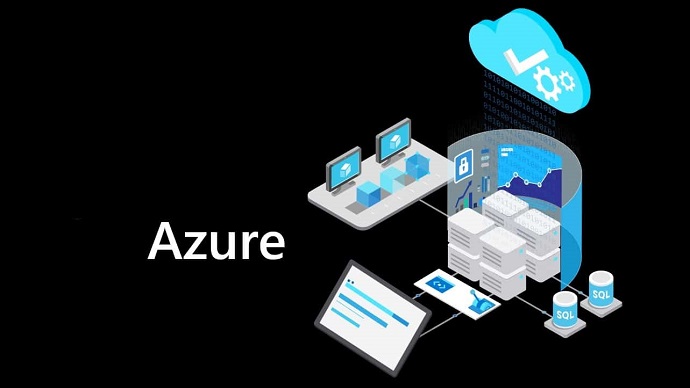Use VCE Exam Simulator to open VCE files

PCDRA Palo Alto Networks Practice Test Questions and Exam Dumps
Question No 1:
Which of the following MITRE ATT&CK tactics does phishing belong to?
A. Initial Access, Persistence
B. Persistence, Command and Control
C. Reconnaissance, Persistence
D. Reconnaissance, Initial Access
Phishing is a method commonly used by cyber attackers to deceive individuals into revealing sensitive information like usernames, passwords, or other personal data, usually via deceptive emails or websites. In the context of the MITRE ATT&CK framework, phishing is typically associated with the Initial Access tactic, which refers to the techniques that adversaries use to gain an initial foothold in a network or system.
Although phishing is primarily linked with Initial Access, it can also be part of the Reconnaissance phase. In this phase, an attacker gathers information about the target to improve the chances of successfully executing an attack. For example, attackers might use phishing emails to impersonate legitimate entities, collecting information about users’ interactions, habits, or vulnerabilities. This helps the attackers craft more convincing phishing schemes in future attempts.
The Initial Access tactic is where phishing is most often categorized in the MITRE ATT&CK framework. Once attackers have completed the reconnaissance phase, they may craft a phishing attack using the information they’ve gathered. They could use a deceptive email with malicious links or attachments, which when clicked by the target, might result in downloading malware or providing credentials, thus granting the attackers access to the network.
In summary, phishing serves as an entry point in the Initial Access stage, allowing attackers to bypass traditional security measures by tricking individuals into unwittingly granting access. While it may play a role in Reconnaissance, its primary function in the MITRE ATT&CK framework aligns with gaining Initial Access to the system.
Question No 2:
An executive is seeking to monitor the Mean Time to Resolution (MTTR) metric in order to evaluate the organization's efficiency in resolving issues.
Which of the following built-in dashboards would be the most suitable option for them?
A. Security Manager Dashboard
B. Data Ingestion Dashboard
C. Security Admin Dashboard
D. Incident Management Dashboard
Answer: The best option for an executive seeking the Mean Time to Resolution (MTTR) metric would be the D. Incident Management Dashboard.
Explanation:
The Mean Time to Resolution (MTTR) is a key performance indicator (KPI) that measures the average time it takes for an organization to resolve an incident after it has been identified. This metric is crucial for executives who want to understand the efficiency of their incident management process and the speed at which issues are being addressed. By focusing on MTTR, organizations can identify bottlenecks, improve operational efficiency, and enhance customer satisfaction.
For an executive interested in MTTR, the Incident Management Dashboard is the most appropriate tool. This dashboard is specifically designed to track and display data related to incidents, including the time taken to resolve each one. It helps provide insights into how well the organization is handling its incidents, whether they are security breaches, system downtimes, or customer service issues. The dashboard will typically include features like tracking incident lifecycle stages, categorizing incidents by priority, and offering detailed statistics on resolution times, enabling the executive to monitor trends and performance over time.
Let’s review the other dashboards and why they may not be suitable for tracking MTTR:
A. Security Manager Dashboard: While focused on security-related incidents, this dashboard might not provide a holistic view of all incidents, especially those not tied to security. It would likely emphasize security event tracking rather than resolution times for all types of issues.
B. Data Ingestion Dashboard: This dashboard tracks the process of data collection and ingestion, which is unrelated to incident resolution. It does not focus on MTTR or the management of incidents.
C. Security Admin Dashboard: While useful for managing security configurations and settings, this dashboard would not focus on incident resolution times. It is geared towards administrative tasks rather than incident handling metrics.
In conclusion, the Incident Management Dashboard is the ideal choice for tracking MTTR, as it is designed specifically to monitor the time it takes to resolve incidents and provides the executive with the necessary insights to assess incident management effectiveness.
Question No 3:
What are the two primary purposes of the “Respond to Malicious Causality Chains” feature in a Cortex XDR Windows Malware Profile? (Select two correct answers.)
A. Automatically close the network connections involved in malicious traffic.
B. Automatically terminate the processes responsible for malicious activity.
C. Automatically stop the threads associated with malicious activity.
D. Automatically block the IP addresses linked to malicious traffic.
A. Automatically close the network connections involved in malicious traffic.
B. Automatically terminate the processes responsible for malicious activity.
The "Respond to Malicious Causality Chains" feature in Cortex XDR is a critical component of the platform's proactive defense capabilities, specifically designed to identify and neutralize malicious behavior in real-time on Windows systems. This feature helps to respond to incidents where malicious activity is part of a larger, interconnected chain of events that can span across multiple systems, processes, and network activities.
Automatically close the network connections involved in malicious traffic (A): This purpose addresses the threat by immediately halting malicious communications that could lead to data exfiltration, propagation of the malware, or additional command-and-control (C&C) instructions. By closing these connections, the system prevents further interaction between the infected device and the external attacker infrastructure. This action minimizes the attacker’s ability to manipulate or control the system, thus reducing the overall risk of further compromise.
Automatically terminate the processes involved in malicious activity (B): Once a malicious process is identified, terminating it is crucial for stopping the immediate threat. This could involve shutting down ransomware processes, backdoors, or any other process actively executing harmful operations like spreading malware or stealing data. By killing these processes, the system effectively disrupts the attack's execution and prevents further damage from that specific process.
Other options like terminating threads (C) or blocking IP addresses (D) are also important defensive measures, but they do not directly address the causality chains in the same way. While blocking IPs can be part of a larger containment strategy, and stopping threads can help with finer granularity, these actions are more focused on specific components rather than the broader goal of breaking the chain of malicious actions that lead to system compromise. Hence, A and B best capture the purpose of responding to malicious causality chains.
In essence, the "Respond to Malicious Causality Chains" feature automates the identification and containment of multi-stage threats, focusing on process and network activity to neutralize malware more efficiently. This automation plays a critical role in minimizing the damage caused by complex attacks in real-time.
Question No 4:
When creating a custom XQL (Extended Query Language) query in a dashboard, how can a user save that query to the Widget Library?
A. Click the three dots on the widget and then choose “Save” to link the query to the Widget Library.
B. This feature is not supported; the user must exit the dashboard and enter the Widget Library first to create the query.
C. Click on “Save to Action Center” in the dashboard, and you will be prompted to provide a name and description for the query.
D. Click on “Save to Widget Library” in the dashboard, and you will be prompted to provide a name and description for the query.
Answer:
D. Click on “Save to Widget Library” in the dashboard, and you will be prompted to provide a name and description for the query.
Explanation:
In dashboards that support the creation of custom XQL queries, saving those queries for future use is a valuable feature. The Widget Library serves as a centralized location where users can store and manage their queries, making it easier to reuse and share custom queries across different dashboards or widgets.
To save an XQL query to the Widget Library, the correct approach is to click on the “Save to Widget Library” option within the dashboard. This option allows users to directly save their custom queries without needing to exit the dashboard or navigate away. When users click this option, they are prompted to provide a name and description for the query, ensuring it is easy to identify and understand when stored in the Widget Library.
Why Option D is Correct:
Option D directly aligns with the functionality provided by the system. It allows for seamless integration of the XQL query into the Widget Library. The prompt for a name and description ensures that the user can easily manage and retrieve their queries later.
Why Other Options are Incorrect:
Option A suggests that clicking on the three dots and selecting “Save” will link the query to the Widget Library, but this is not the correct method for saving queries to the library.
Option B claims that saving to the Widget Library is unsupported and requires exiting the dashboard, which is inaccurate. Saving to the Widget Library can be done directly within the dashboard itself.
Option C refers to the "Save to Action Center" feature, which is not related to the Widget Library and would not save the query in that location.
In summary, the correct and easiest method for saving a custom XQL query to the Widget Library is by selecting the “Save to Widget Library” option, providing a name and description as prompted. This functionality enhances the efficiency of managing and reusing custom queries.
Question No 5:
What type of license is needed to ingest external logs from various vendors into a system?
A. Cortex XDR Pro per Endpoint
B. Cortex XDR Vendor Agnostic Pro
C. Cortex XDR Pro per TB
D. Cortex XDR Cloud per Host
To effectively manage and analyze logs from a range of external vendors in a security environment, it is crucial to select the right licensing model for your security platform. In the context of Cortex XDR, a product by Palo Alto Networks, the correct license for ingesting external logs from multiple vendors is B. Cortex XDR Vendor Agnostic Pro.
Answer: B. Cortex XDR Vendor Agnostic Pro
When managing a security infrastructure that involves multiple third-party vendors, the ability to ingest, process, and correlate logs from various external systems becomes essential. This is where selecting the appropriate licensing model for your security tools, such as Cortex XDR, plays a vital role in ensuring smooth operations.
Cortex XDR Vendor Agnostic Pro is specifically designed for environments where integration with external vendor logs is required. This license allows for the ingestion of logs regardless of the vendor, making it ideal for complex environments that use products from various manufacturers. The key advantage of this model is that it offers flexibility in terms of log collection and analysis from heterogeneous sources, which is often seen in organizations with diverse IT ecosystems. It helps to centralize and correlate data from different vendors, making it easier to identify and respond to potential threats.
Other licensing models such as Cortex XDR Pro per Endpoint or Cortex XDR Pro per TB are more specific to endpoint protection or data volume-based licensing, rather than the ingestion of external logs. While these licenses provide robust endpoint protection or efficient data processing, they do not cater to the need for aggregating and analyzing logs from multiple vendors in a centralized manner.
In conclusion, Cortex XDR Vendor Agnostic Pro provides the necessary capabilities for environments that need to ingest external logs from a variety of vendors, ensuring comprehensive security coverage and effective threat detection and response.
Question No 6:
An attacker attempts to load dynamic libraries on macOS from an insecure or unauthorized location. Which Cortex XDR module can effectively prevent this type of attack?
A. DDL Security
B. Hot Patch Protection
C. Kernel Integrity Monitor (KIM)
D. Dylib Hijacking
Explanation:
In macOS, dynamic libraries (.dylib files) play a crucial role in the operating system’s ability to load shared code that can be used by different applications. However, attackers can exploit these dynamic libraries by attempting to load them from untrusted or insecure locations. This is commonly referred to as Dylib Hijacking, a form of attack where the attacker manipulates the application’s behavior by substituting legitimate dynamic libraries with malicious ones.
When an application loads a dynamic library, macOS follows a search path to locate it. If the path includes directories where malicious libraries might reside (such as user directories or temporary folders), an attacker can place a malicious library with the same name as a legitimate one. This can lead to the attacker gaining control over the application’s execution by causing it to load the malicious dylib, which could contain harmful code.
Cortex XDR offers a module specifically designed to prevent Dylib Hijacking. This module helps protect against this form of attack by ensuring that only trusted, signed libraries are loaded by applications and by monitoring the locations from which these libraries are being loaded. By doing so, it prevents attackers from successfully injecting malicious dynamic libraries into running applications.
A. DDL Security: This is not a specific Cortex XDR module. While dynamic link libraries (DLLs) are relevant to Windows, in macOS, the equivalent term is dylibs. The terminology here is incorrect for macOS-based attacks.
B. Hot Patch Protection: This refers to a security feature that prevents the unauthorized modification or patching of running processes. It’s more related to defending against techniques that modify application memory or code while running, rather than preventing the loading of malicious libraries.
C. Kernel Integrity Monitor (KIM): This module focuses on detecting and preventing unauthorized changes or manipulations at the kernel level, which is a low-level part of the operating system. While it is an important security feature, it is not directly related to preventing the loading of malicious dynamic libraries, which is the focus of Dylib Hijacking.
In conclusion, Dylib Hijacking is the correct Cortex XDR module for defending against the attack scenario described, providing a crucial layer of defense for macOS systems against this specific exploit.
Question No 7:
What is the primary responsibility of the Unit 42 team at Palo Alto Networks?
A. Unit 42 is responsible for automation and orchestration of products.
B. Unit 42 is responsible for the configuration optimization of the Cortex XDR server.
C. Unit 42 is responsible for threat research, malware analysis, and threat hunting.
D. Unit 42 is responsible for the rapid deployment of Cortex XDR agents.
Correct Answer: C. Unit 42 is responsible for threat research, malware analysis, and threat hunting.
Explanation:
Unit 42 is a specialized cybersecurity team within Palo Alto Networks that focuses on providing advanced threat research, malware analysis, and proactive threat hunting efforts. It is not involved in automation, orchestration, or the direct configuration optimization of products like Cortex XDR servers. Instead, Unit 42's mission is to analyze and respond to emerging cybersecurity threats, often conducting in-depth investigations into cyberattacks and cybercriminal activities.
Their work involves the analysis of malware samples, reverse engineering, and determining attack vectors, tactics, techniques, and procedures used by cyber adversaries. This enables organizations to stay ahead of threats by providing actionable intelligence. Unit 42 plays a crucial role in the global fight against cybercrime, providing insights not only to Palo Alto Networks but also to the wider cybersecurity community.
Furthermore, Unit 42 is known for its research in various areas, including but not limited to ransomware, advanced persistent threats (APTs), and zero-day vulnerabilities. This team also conducts threat hunting activities, which means they actively search for signs of malicious activity within an organization's network, often before any actual breach or damage occurs.
Additionally, the team’s findings are often shared publicly through blogs, reports, and threat intelligence feeds, contributing to the collective defense of the cybersecurity ecosystem. Unit 42’s research and findings help Palo Alto Networks and its customers to better understand and mitigate the ever-evolving cybersecurity landscape.
In contrast to other responsibilities like deployment or configuration, the core focus of Unit 42 is the deep, investigative work that enables organizations to recognize and defend against sophisticated cyber threats.
Question No 8:
In the Cortex XDR platform, which of the following is a valid type of Indicator of Compromise (IOC) that can be defined to detect and respond to potential threats?
A. Destination Port
B. E-mail Address
C. Full Path
D. App-ID
Correct Answer: C. Full Path
Cortex XDR by Palo Alto Networks is a robust security platform designed to unify detection, investigation, and response across multiple data sources, such as endpoint, network, cloud, and third-party tools. One of the key features of Cortex XDR is its ability to define and act upon Indicators of Compromise (IOCs), which are data artifacts that suggest the presence of malicious activity or a breach.
Full Path is a valid and commonly used IOC in Cortex XDR. This IOC refers to a specific file or directory path on an endpoint. Malicious actors often drop payloads or executables in predictable file paths to evade detection or ensure persistence. By defining a full path as an IOC, security teams can monitor for the creation, execution, or modification of files at that location. For example, if malware typically resides in C:\Users\Public\Documents\malware.exe, this full path can be registered as an IOC. If any activity is detected involving this path, Cortex XDR can trigger alerts or automated response actions, such as isolating the host or killing the process.
Other options like destination port, email address, and App-ID are valuable indicators in broader network and email security contexts but are not supported as IOC types within Cortex XDR itself. Instead, Cortex XDR primarily focuses on IOCs such as file hashes, IP addresses, domain names, file names, and full paths.
By leveraging valid IOCs like full paths, Cortex XDR enhances an organization’s ability to detect early signs of compromise, respond swiftly, and reduce the dwell time of threats within the environment.
Question No 9:
When an incident is first reported to Cortex and viewed directly within the system, what is the value of the "Assigned To" field for this newly reported incident?
A. Pending
B. It is blank
C. Unassigned
D. New
In Cortex (a popular security incident response and management platform), when a new incident is initially reported and viewed directly in the system, the "Assigned To" field will typically show as Unassigned. This reflects that, at the time of creation, the incident has not yet been assigned to a specific individual or team responsible for investigating or resolving it. This is the default behavior for new incidents in many incident management systems, where the assignment of responsibilities is a step that usually happens after the initial report is filed.
The "Assigned To" field serves an essential purpose in tracking which personnel or team is accountable for handling the incident. It helps ensure that incidents are not overlooked and are properly managed. When an incident is first created, it is common for it to be left Unassigned until a designated team member or analyst takes ownership of the case. This ensures that the right resources are applied to the investigation or resolution of the incident. The system may allow users to manually assign incidents to specific individuals or groups as part of the incident triage process.
Let’s analyze the other options:
A. Pending: This status might be used later in the lifecycle of the incident when it's waiting for further information or action, but it’s not the default value for the "Assigned To" field.
B. It is blank: While some systems may leave the field blank, in Cortex, the default value for a newly reported incident is more likely to be "Unassigned" rather than blank.
D. New: This status usually refers to the overall status of the incident, indicating that it is newly created, but it does not directly relate to the "Assigned To" field.
Therefore, Unassigned is the correct value for the "Assigned To" field for a new incident when it is first reported to Cortex.
Related Exams

Top Training Courses











SPECIAL OFFER: GET 10% OFF
This is ONE TIME OFFER

A confirmation link will be sent to this email address to verify your login. *We value your privacy. We will not rent or sell your email address.
Download Free Demo of VCE Exam Simulator
Experience Avanset VCE Exam Simulator for yourself.
Simply submit your e-mail address below to get started with our interactive software demo of your free trial.